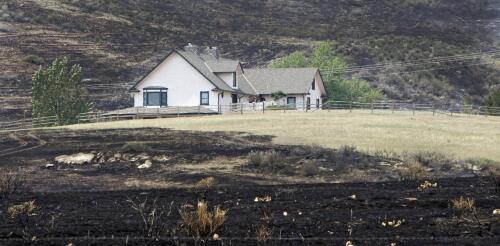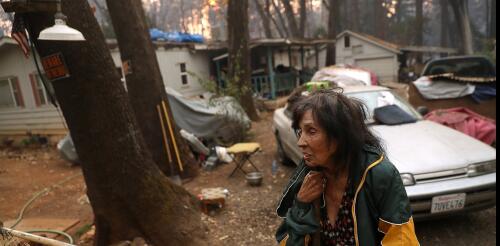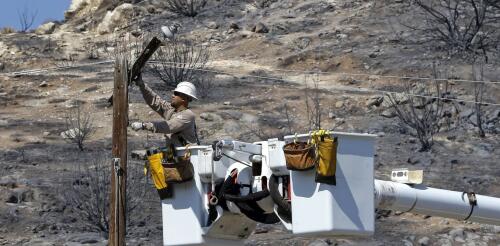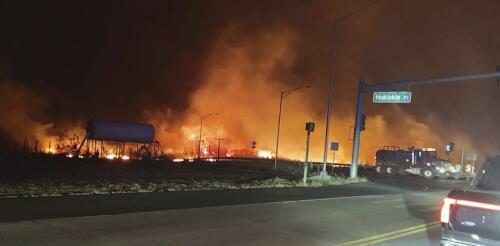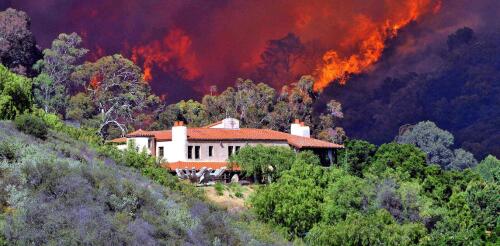Fire risk
Extreme heat has already made 2024 a busy wildfire year. More acres had burned by mid-July than in all of 2023, and several communities had lost homes to wildfires. As fire season intensifies across the West, there are steps homeowners can take to make their homes less vulnerable to burning and increase the likelihood that firefighters can protect their property in the event of a wildfire. We research wildfire risk to homes and communities. Here’s what decades of research suggest homeowners in high-fire-risk areas can do to protect their properties. This house near Cle Elum, Wash., survived a 2012 wildfire because of the defensible space around the structure, including a lack of trees and brush close to the house, according to state officials. AP Photo/Elaine Thompson Small improvements make big differences A structure’s flammability depends on both the materials that were used to build...
As wildfires burn across the Western U.S., the people in harm’s way are increasingly those least able to protect their homes from fire risks, evacuate safely or recover after a fire. In a new study, we and a team of fellow wildfire scientists examined who lived within the perimeters of wildfires over the past two decades in Washington, Oregon and California – home to about 90% of Americans in the U.S. West exposed to wildfires over that period. Overall, nearly half a million people in California, Oregon and Washington were exposed to wildfires at some point during the past 22 years. Alarmingly, about half the people exposed to wildfires in Washington and Oregon were considered socially vulnerable. While the number of people exposed to fire rose overall, the number of socially vulnerable people exposed more than tripled between the first and second decades. How social vulnerability affects fire risk A variety of factors shape social vulnerability, including wealth,...
Maui County is suing Hawaiian Electric, claiming the utility was negligent for not shutting off power as strong winds hit the island in the hours before the city of Lahaina burned. While the cause of the devastating Aug. 8, 2023, wildfire is still under investigation, forecasters had warned that powerful winds were expected, and West Maui had exceptionally dry conditions that put it at high risk for wildfires. In many cases, however, deciding to shut off power isn’t as simple is as it might sound. We asked Tim Lieuwen, executive director of the Strategic Energy Institute at Georgia Tech, about the risks and trade-offs utilities have to weigh in deciding how to respond during fire-risk conditions. Why are utilities so often suspected in fires? There are a lot of ways that utility lines, particularly high-voltage lines, can spark fires. If tree branches are too close to the lines, electricity can arc between the line and the tree. Old equipment can set off sparks. If the w...
Wildfires, pushed by powerful winds, raced through Lahaina, Hawaii, on Aug. 8 and 9, 2023, leaving a charred and smoldering landscape across the tourist town of about 13,000 residents that was once the capital of the Kingdom of Hawaii. Nearly 100 people are believed to have died in the fires, Maui County officials said. Others were rescued by the U.S. Coast Guard after going into the ocean to escape the flames. Dry grasses and strong winds, influenced by Hurricane Dora passing far to the south, heightened the risk as wildfires burned both in Maui’s tourist-filled west coast and farther inland and on the Big Island of Hawaii. Most fires in the U.S. are suppressed before they have a chance to threaten communities, but the winds were too strong to send helicopters into the sky to help contain Maui’s fires on the first day, leaving firefighters to battle the blazes from the ground. Lt. Gov. Sylvia Luke issued an emergency declaration, activating the National Guard to he...
Humans have learned to fear wildfire. It can destroy communities, torch pristine forests and choke even faraway cities with toxic smoke. Wildfire is scary for good reason, and over a century of fire suppression efforts has conditioned people to expect wildland firefighters to snuff it out. But as journalist Nick Mott and I explore our new book, “This Is Wildfire: How to Protect Your Home, Yourself, and Your Community in the Age of Heat,” and in our podcast “Fireline,” this expectation and the approach to wildfire will have to change. Over time, extensive fire suppression has set the stage for the increasingly destructive wildfires we see today. The problem with fighting every fire The way the U.S. deals with wildfires today dates back to around 1910, when the Great Burn torched some 3 million acres across Washington, Idaho, Montana and British Columbia. After watching the fire’s swift and unstoppable spread, the fledgling Forest Service developed...
